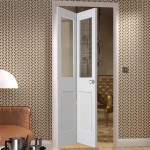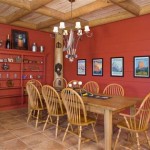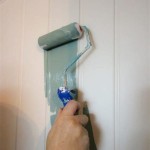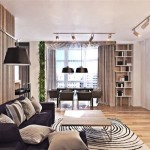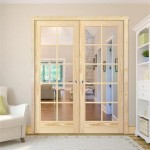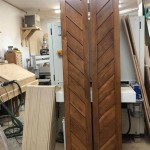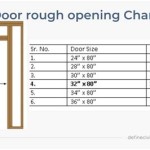Words To Describe Texture In Interior Design
Texture, in the realm of interior design, refers to the tactile quality of a surface, or the visual representation of that tactile quality. It is a crucial element that contributes significantly to the overall aesthetic and ambiance of a space. Effectively communicating the texture of various materials and finishes requires a precise vocabulary. A well-chosen descriptive word can evoke a specific feeling or visual image, enabling designers and clients to collaborate more effectively.
Understanding and utilizing descriptive language related to texture allows for a more nuanced approach to interior design projects. It goes beyond simply stating that a surface is "smooth" or "rough." It delves into the subtleties that differentiate one type of smooth from another, or one type of roughness from another. This article explores a wide range of words to describe texture in interior design, categorized by their primary characteristics, providing a comprehensive resource for enhancing communication and fostering a deeper appreciation for the role of texture in creating compelling interior spaces.
Describing Smooth Textures
Smooth textures are characterized by a lack of discernible surface irregularities. They often convey a sense of sophistication, cleanliness, and modernity. However, there are various degrees and types of smoothness, each with its own distinctive character. The following words can be used to describe smooth textures with greater accuracy:
Sleek: This term implies a smooth, glossy, and often streamlined surface. It is frequently used to describe materials like polished metal, glass, or high-gloss lacquer finishes. Sleek textures are often associated with contemporary and minimalist designs.
Silky: Evoking the feeling of silk fabric, this describes a smooth, soft, and lustrous surface. It is commonly used for textiles, upholstery, and wall coverings that have a luxurious and refined appearance. A silky texture is often associated with comfort and elegance.
Polished: This describes a surface that has been treated to achieve a high level of smoothness and reflectivity. Polished surfaces are often found on stone, metal, and wood, and they can create a sense of formality and grandeur. The degree of polish can vary, ranging from a subtle sheen to a mirror-like finish.
Glossy: Similar to polished, glossy indicates a high degree of reflectivity, but it often refers to surfaces with a less refined or even artificial appearance. Glossy finishes are common in paints, plastics, and laminates, and they can create a bold and contemporary look. A glossy texture reflects light intensely.
Lustrous: This term denotes a soft, radiant sheen. It is often used to describe materials like pearls, satin, or some types of metal. Lustrous textures offer a subtle elegance and can add depth to a design scheme.
Satiny: Similar to silky, but often refers to synthetic materials rather than natural fibers. Satiny textures have a smooth and slightly reflective surface. It is often used to describe synthetic fabrics and paints.
Even: This term simply indicates a surface that is uniformly smooth, without any bumps or irregularities. It can be used to describe a wide range of materials and finishes, from painted walls to countertops.
Unblemished: Signifies a pristine surface, free from any imperfections or flaws. This is often used to describe new or particularly well-maintained surfaces. This can suggest luxury or a high level of care.
Describing Rough Textures
Rough textures are characterized by noticeable surface irregularities. They can add visual interest, tactility, and a sense of naturalness to a space. The following words can be used to describe rough textures with greater nuance:
Rustic: This describes a rough, uneven, and often aged surface. It is frequently used to describe materials like reclaimed wood, exposed brick, and natural stone. Rustic textures evoke a sense of history and authenticity, often associated with farmhouses or cottages.
Coarse: This implies a rough, granular, and somewhat unpleasant texture. It is commonly used to describe materials like burlap, heavy canvas, or unfinished concrete. Coarse textures can add a rugged and industrial feel to a space.
Textured: This is a general term that simply indicates the presence of surface irregularities. It can be used to describe a wide range of materials and finishes, from textured wallpaper to stucco walls. The degree and type of texture can vary greatly.
Bumpy: This describes a surface with raised areas or protrusions. It can be used to describe materials like pebbled leather, textured paint, or uneven plaster. Bumpy textures can add tactility and visual interest.
Uneven: This indicates a surface that is not smooth or uniform. It can be used to describe a wide range of materials and finishes, from handcrafted ceramics to natural stone floors. Uneven textures can add character and authenticity.
Grainy: This describes a surface with a visible pattern of small particles or granules. It is commonly used to describe wood, stone, and some types of paint. Grainy textures can add depth and visual interest.
Knobbly: A texture characterized by small, rounded protrusions. This is often found in natural materials such as tree bark or roughly hewn stone. It suggests a natural, unrefined aesthetic.
Abrasive: Implies a texture that is rough and potentially damaging upon contact. This term is often used to describe materials used for cleaning or sanding, but can also be used for industrial-style design elements.
Describing Textures with Specific Qualities
Beyond smooth and rough, textures can also possess qualities that are best described by specific words that relate to their unique visual or tactile attributes. These words can help refine the description of texture and evoke a more specific sensory experience.
Woven: This describes a texture created by interlacing threads or strands. It is commonly used to describe fabrics, carpets, and baskets. Woven textures can add warmth, depth, and visual interest.
Knitted: Similar to woven, but created by interlocking loops of yarn. Knitted textures are often found in fabrics, blankets, and upholstery. Knitted textures are typically softer and more pliable than woven textures.
Embossed: This describes a texture created by raising a pattern or design on a surface. It is commonly used on wallpaper, fabrics, and leather. Embossed textures can add depth and visual interest.
Engraved: This describes a texture created by carving a pattern or design into a surface. It is commonly used on wood, metal, and glass. Engraved textures can add detail and sophistication.
Crinkled: This describes a surface with many small wrinkles or folds. It is commonly used to describe fabrics, paper, and foil. Crinkled textures can add visual interest and a sense of dynamism.
Pleated: This describes a surface with regular, evenly spaced folds. It is commonly used to describe fabrics and draperies. Pleated textures can add formality and elegance.
Flocked: This describes a texture created by adhering small fibers to a surface, creating a soft, velvety feel. It is commonly used on wallpaper, fabrics, and jewelry boxes. Flocked textures can add luxury and warmth.
Iridescent: This describes a surface that displays a range of colors depending on the angle of view. It is commonly used in glass, tiles, and certain fabrics. Iridescent textures can add a sense of magic and visual interest.
Translucent: Allows light to pass through, but not transparently. This texture can be found in materials like frosted glass or sheer fabrics. Translucent textures create a soft and diffused light effect.
Opaque: Does not allow light to pass through. This is a fundamental characteristic of many materials, such as wood, stone, and solid metals. Opaque textures block light and provide privacy.
By utilizing this expanded vocabulary, interior designers can effectively communicate their vision and create spaces that are not only visually appealing but also tactilely engaging. The careful selection and description of textures can transform a space from ordinary to extraordinary, adding depth, character, and a sense of harmonious complexity.

I Would Use This Hand Out As A Viewing Activity For Older Kids Put Blank Beside The Examples And Provide Word Bank With Younger Even

Interior Design Styles 101 The Ultimate Guide To Decorating In 2025 Decorilla

Interior Design Styles 101 The Ultimate Guide To Decorating In 2025 Decorilla

Interior Design Styles 101 The Ultimate Guide To Decorating In 2025 Decorilla

Interior Design Styles 101 The Ultimate Guide To Decorating In 2025 Decorilla

How To Use Texture In Interior Design Dm

Interior Design Styles 101 The Ultimate Guide To Decorating In 2025 Decorilla

Interior Design Styles 101 The Ultimate Guide To Decorating In 2025 Decorilla

The 7 Elements Of Interior Design Flooring America

The Importance Of Using Texture In Interior Design
Related Posts

